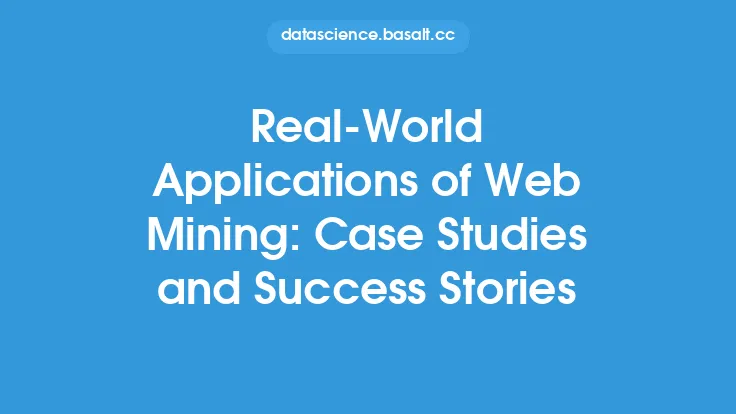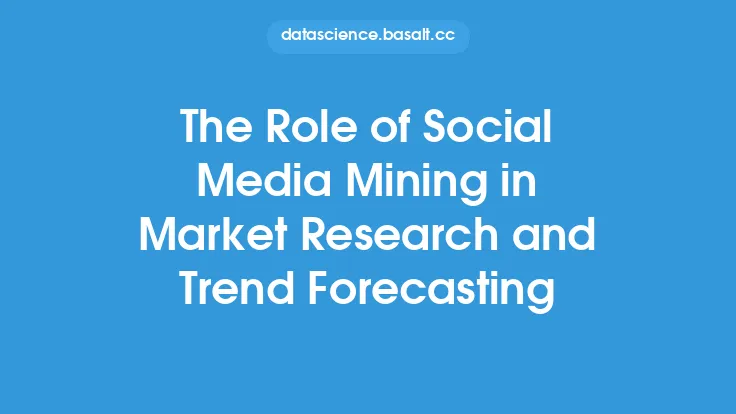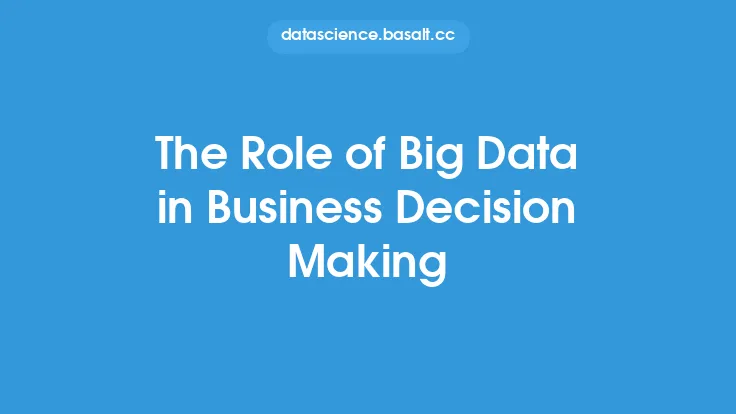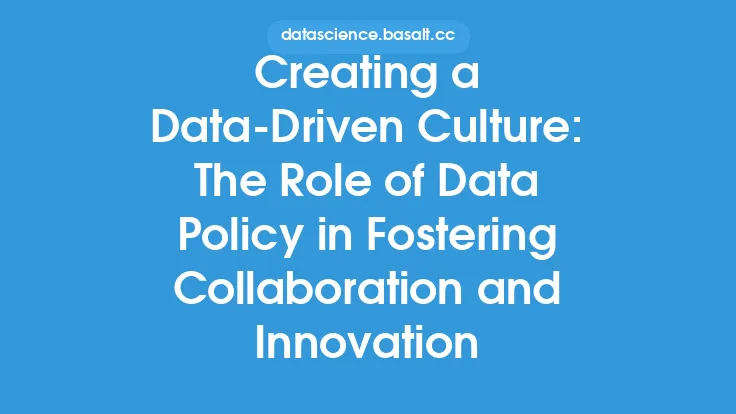The advent of the internet and the proliferation of online data have given rise to a new era of business intelligence, where web mining plays a crucial role in extracting valuable insights from online data. Web mining, a subset of data mining, involves the application of data mining techniques to discover patterns, relationships, and insights from web data. In the context of e-commerce and business intelligence, web mining has become an essential tool for companies to gain a competitive edge, improve customer experience, and inform business decisions.
Introduction to Web Mining in E-commerce
Web mining in e-commerce involves the analysis of web data to identify trends, patterns, and correlations that can inform business strategies. This includes analyzing customer behavior, preferences, and demographics to create targeted marketing campaigns, improve customer segmentation, and enhance the overall customer experience. Web mining can also be used to analyze competitor data, identify market gaps, and monitor industry trends. By leveraging web mining techniques, e-commerce companies can gain valuable insights into customer behavior, preferences, and needs, enabling them to make data-driven decisions and stay ahead of the competition.
Types of Web Mining
There are several types of web mining, including web content mining, web structure mining, and web usage mining. Web content mining involves the analysis of web page content, such as text, images, and videos, to extract insights and patterns. Web structure mining involves the analysis of the web's link structure to identify relationships between websites and web pages. Web usage mining involves the analysis of user behavior, such as clickstream data and search queries, to understand how users interact with websites and web applications. Each type of web mining provides unique insights and can be used to inform different aspects of e-commerce and business intelligence.
Web Mining Techniques
Web mining techniques involve the application of data mining algorithms and statistical methods to extract insights from web data. These techniques include clustering, classification, regression, and association rule mining. Clustering involves grouping similar data points into clusters to identify patterns and relationships. Classification involves assigning a label or category to a data point based on its characteristics. Regression involves modeling the relationship between a dependent variable and one or more independent variables. Association rule mining involves identifying relationships between different variables or attributes. These techniques can be used to analyze web data, such as customer behavior, preferences, and demographics, to extract valuable insights and inform business decisions.
Applications of Web Mining in E-commerce
Web mining has numerous applications in e-commerce, including customer segmentation, targeted marketing, and recommendation systems. Customer segmentation involves grouping customers based on their behavior, preferences, and demographics to create targeted marketing campaigns. Targeted marketing involves using web mining insights to create personalized marketing messages and offers. Recommendation systems involve using web mining algorithms to suggest products or services based on a customer's behavior and preferences. These applications can help e-commerce companies to improve customer engagement, increase sales, and enhance the overall customer experience.
Web Mining for Business Intelligence
Web mining can also be used to inform business intelligence decisions, such as market research, competitor analysis, and trend analysis. Market research involves using web mining to analyze customer behavior, preferences, and demographics to identify market trends and opportunities. Competitor analysis involves using web mining to analyze competitor data, such as website traffic, social media engagement, and customer reviews. Trend analysis involves using web mining to identify industry trends and patterns, such as changes in customer behavior or preferences. These insights can be used to inform business decisions, such as product development, marketing strategies, and investment decisions.
Challenges and Limitations of Web Mining
Despite the benefits of web mining, there are several challenges and limitations to consider. These include data quality issues, such as missing or noisy data, and data privacy concerns, such as ensuring the anonymity and confidentiality of customer data. Additionally, web mining requires significant computational resources and expertise, which can be a barrier for small and medium-sized enterprises. Furthermore, web mining algorithms and techniques are constantly evolving, requiring ongoing investment in research and development to stay up-to-date with the latest advancements.
Future of Web Mining in E-commerce and Business Intelligence
The future of web mining in e-commerce and business intelligence is promising, with ongoing advancements in data mining algorithms, machine learning, and artificial intelligence. The increasing availability of web data, combined with the decreasing cost of computational resources, is making web mining more accessible and affordable for companies of all sizes. Additionally, the integration of web mining with other data sources, such as social media and IoT data, is enabling companies to gain a more comprehensive understanding of customer behavior and preferences. As web mining continues to evolve, we can expect to see new applications and innovations in e-commerce and business intelligence, such as personalized marketing, predictive analytics, and automated decision-making.





